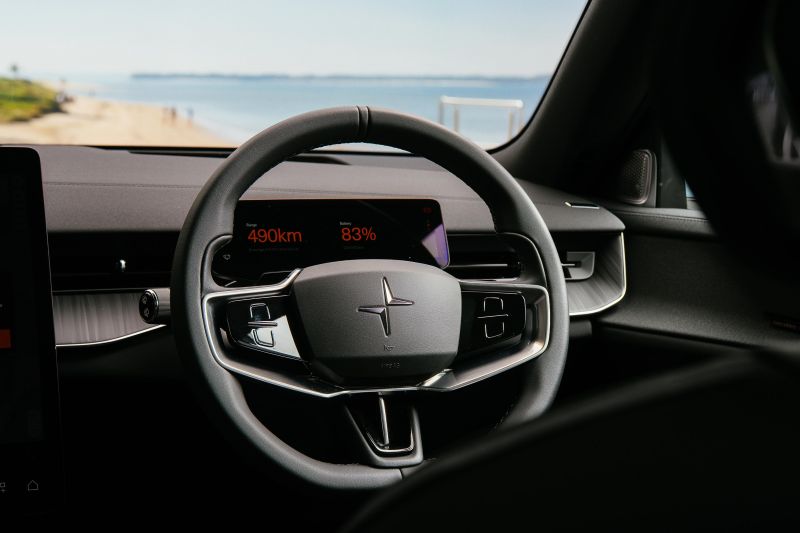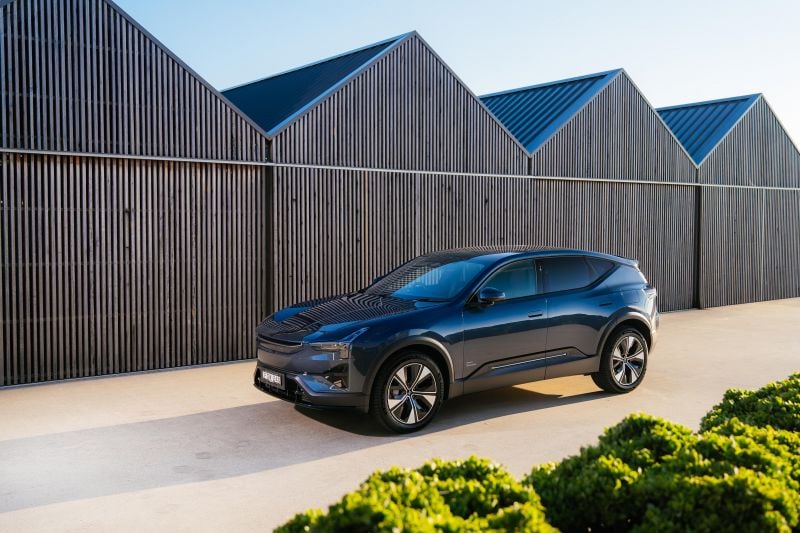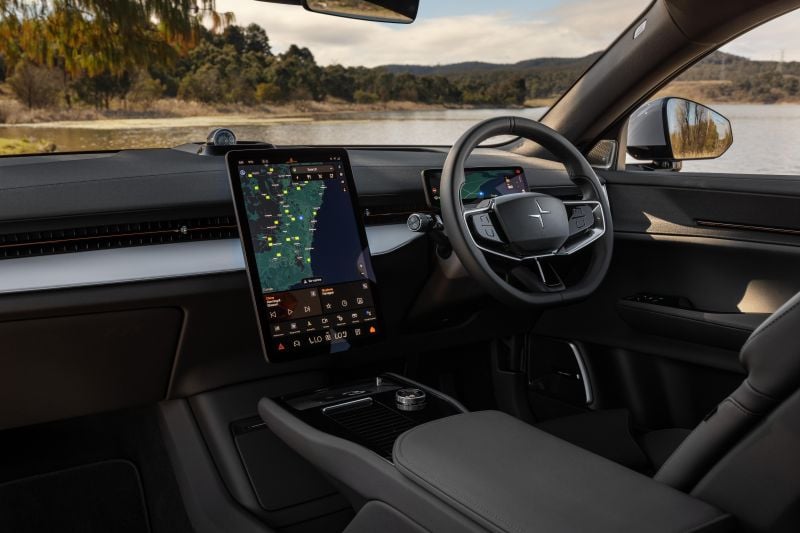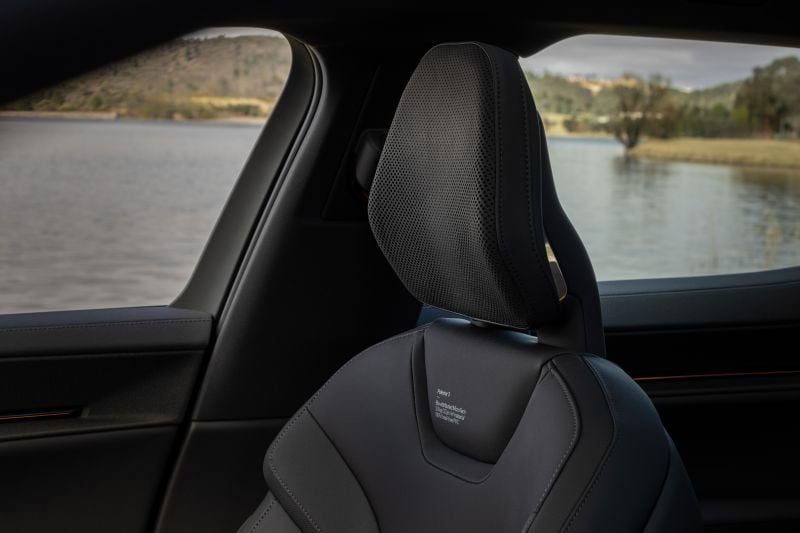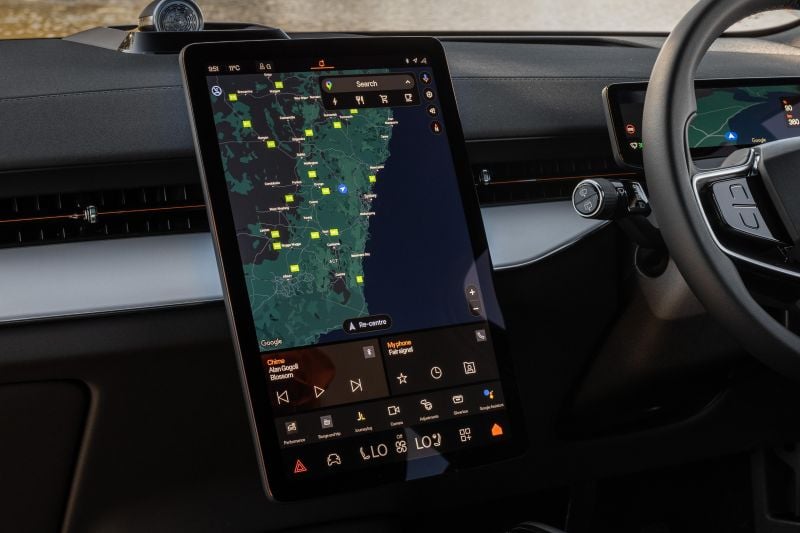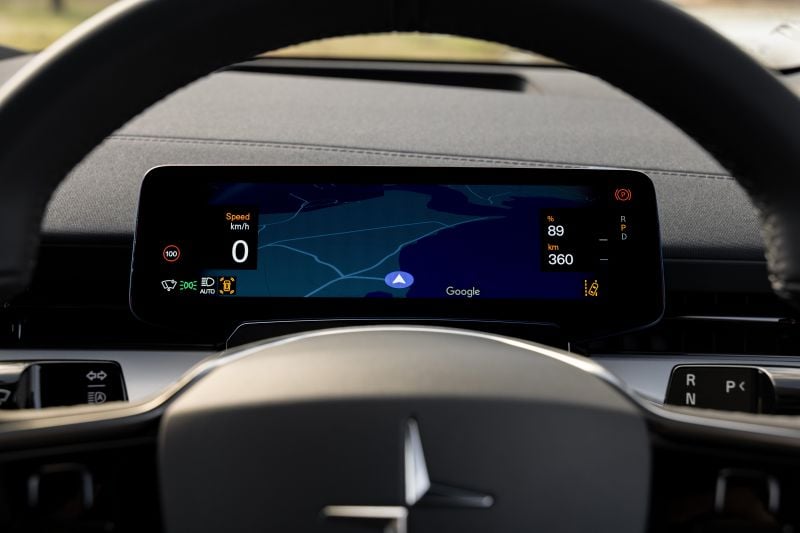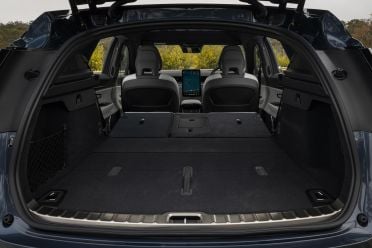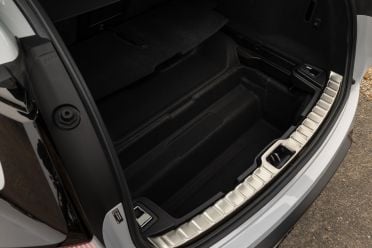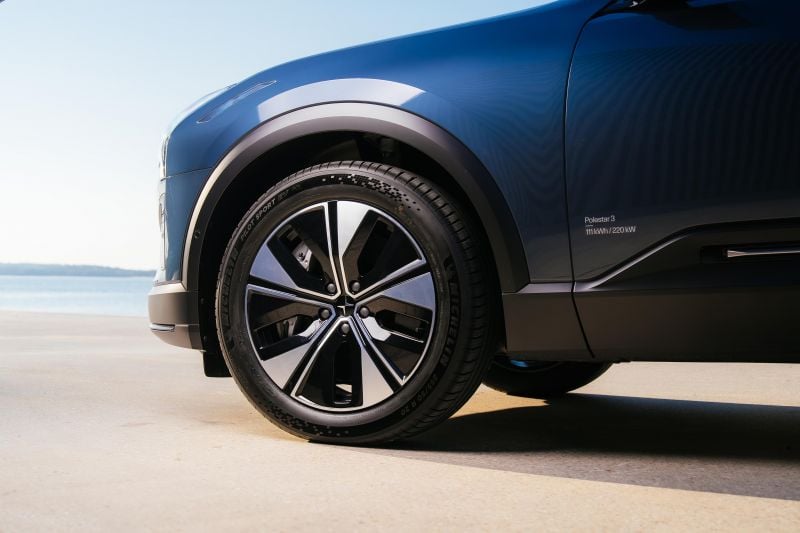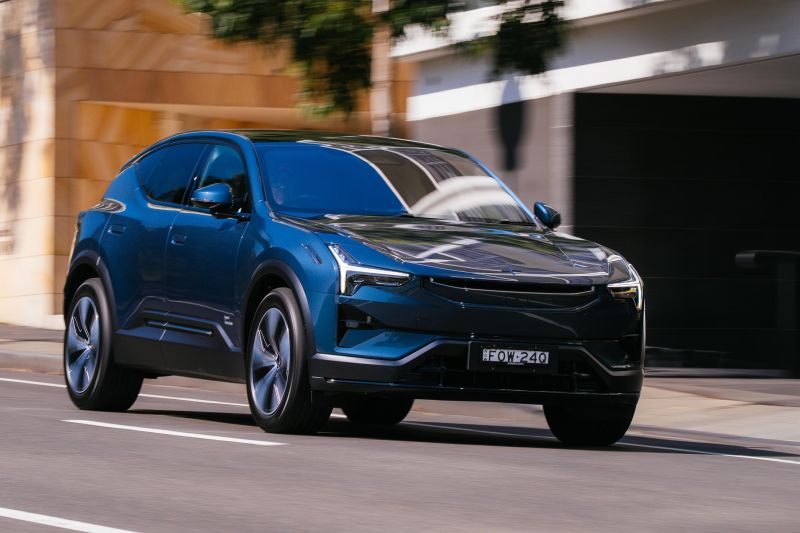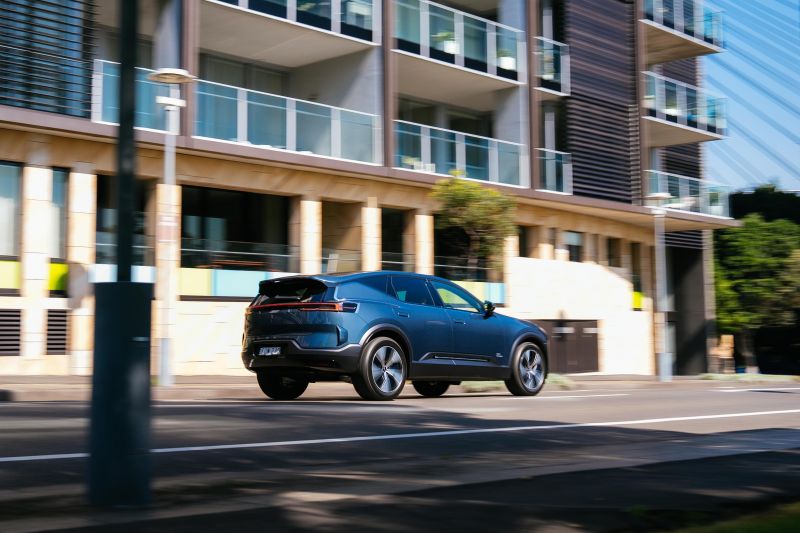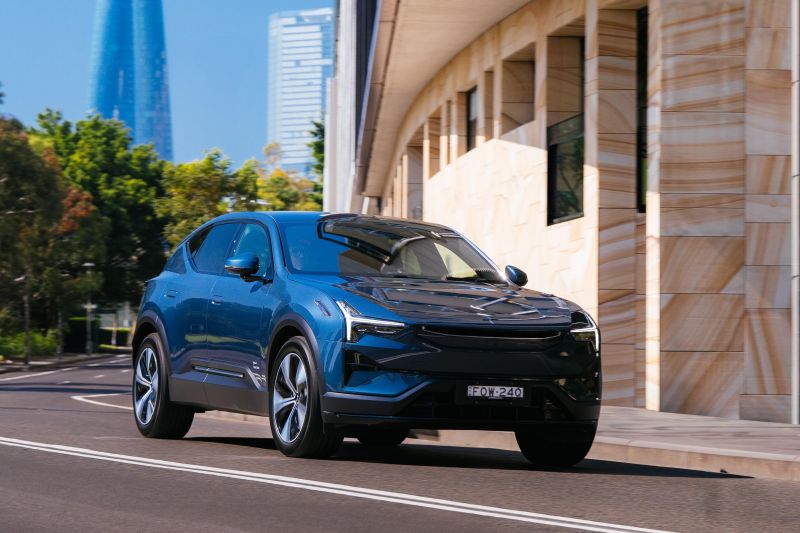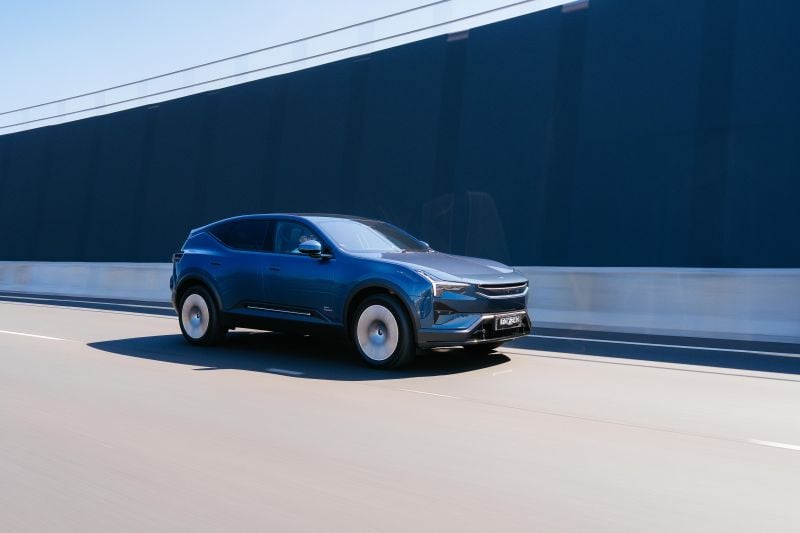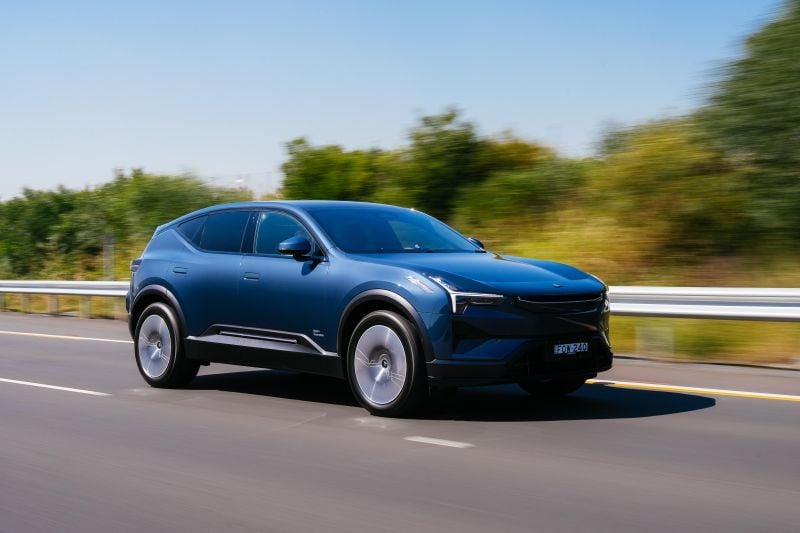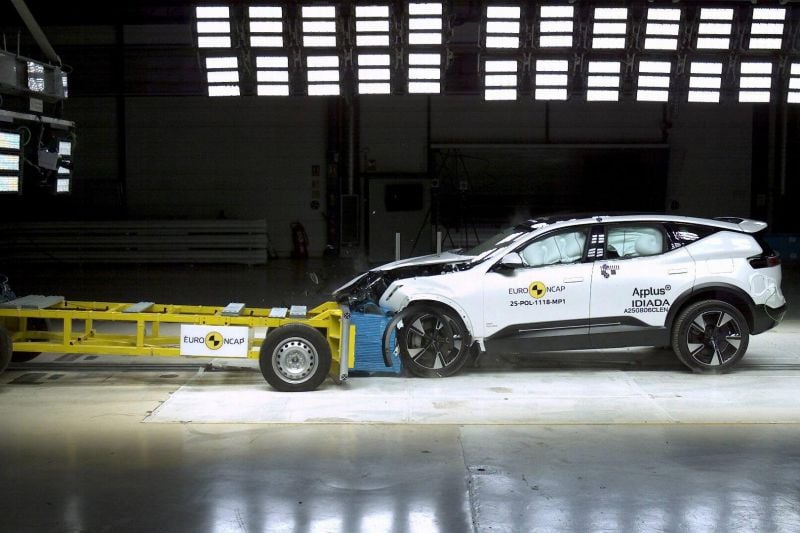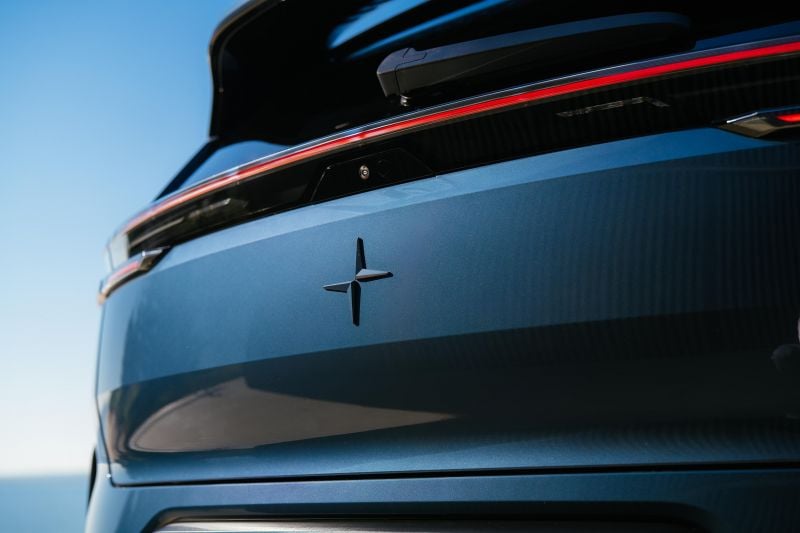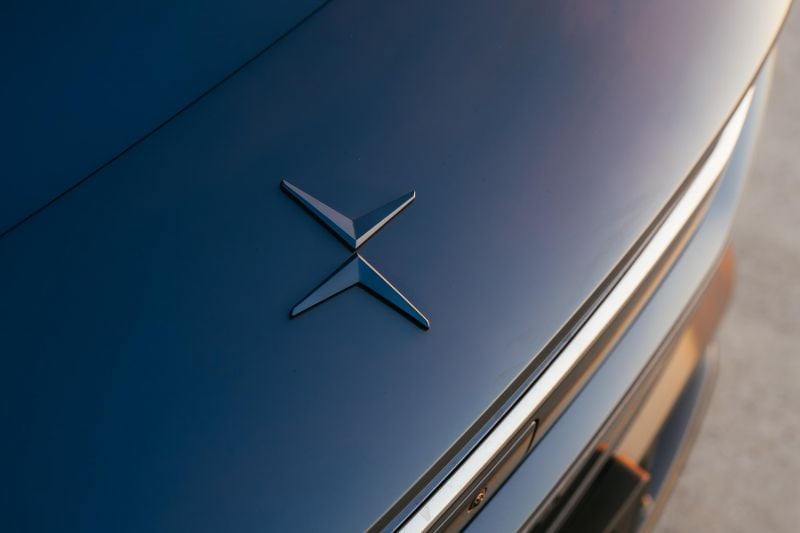Everybody talks about the electric vehicle (EV) price war, but there’s another equally important battle unfolding in the background – the EV range war.
EVs can be had for as little as $30,000 in 2025, and manufacturers are constantly reviewing pricing to outpoint their rivals, but a precious few models are capable of undertaking classic Aussie road trips without running out of charge.
That’s hugely important for families looking to transition from trusty petrol and diesel power to electric motoring.
Which brings us to this – the Polestar 3 Long Range Single Motor. With a claimed range of 700km, no EV in Australia will travel further on a single charge.
Polestar’s hyper-mile hero arrives Down Under as a cut-price entry point into the Sino-Swedish electric brand’s large SUV range, slotting in below a pair of dual-motor variants.
Rivals include the base BMW iX, Mercedes-Benz EQE SUV, Audi Q8 e-tron, Cadillac Lyriq, and Porsche Cayenne.
Is industry-leading driving range enough to catapult the Polestar 3 above such a strong set of alternatives, or is it set to remain a niche option in the growing luxury electric SUV market?
To find out, we saddled up in this new rear-wheel drive entry variant for a weekend jaunt from Melbourne to Adelaide and back.
How does the Polestar 3 compare?
View a detailed breakdown of the Polestar 3 against similarly sized vehicles.

Polestar
Polestar 3
How much does the Polestar 3 cost?
The Polestar 3 is now $14,300 cheaper to get into thanks to the addition of this new rear-drive variant.
| Model | Price before on-road costs |
|---|---|
| 2025 Polestar 3 Long Range Single Motor | $118,420 |
| 2025 Polestar 3 Long Range Dual Motor | $132,720 |
| 2025 Polestar 3 Long Range Dual Motor with Performance pack | $144,420 |
Our tester was kitted out with a healthy set of options including the Plus Pack ($9000), 1.3 Megapixel HD LED headlights ($3000), MicroTech and repurposed aluminium interior trim ($700), and rear privacy glass ($700), inflating the price as tested to $131,640 before on-road costs.
To see how the Polestar 3 stacks up against its rivals, use our comparison tool
What is the Polestar 3 like on the inside?
Like the rest of the Polestar lineup, this new entry into the 3 lineup exemplifies premium minimalism.
Unlike some rival EVs, the Polestar 3 is blessed with soft-touch materials throughout its entire cabin, including panels below the belt.
That means you never accidentally come into contact with cheap plastics that negatively effect perceptions of quality.
The dash and door cards are finished in a wetsuit-like material, while common touch points receive the leather treatment. Aluminium inlays add a classy touch, although the inclusion of gloss black plastic on the centre tunnel detracts from that.
Your main point of contact with the Polestar 3 is the driver’s seat, and both front seats prove comfortable for a wide range of body types.
The base is wide and comes with extendable thigh support, while the sides are lightly bolstered.
Both front seats feature electric adjustment as standard and our tester was equipped with an optional power-adjustable steering column, which makes it easy to find your perfect driving position. Three-stage seat heating is standard.
In front of the driver sits a supple leather steering wheel with pronounced grip points and an uncluttered button layout that aligns with the rest of the interior, which is bereft of physical buttons and dials.
Many manufacturers, both mainstream and luxury, have taken the leap to abandon physical controls, but some have managed that transition better than others.
In the case of Polestar, there’s still work to be done. The 14.5-inch portrait infotainment touchscreen is packed with features and clever shortcuts to reach them, but it’s still challenging to use the system without taking your eyes off the road.
That said, the Polestar 3 offers voice control in the form of Google Assistant. I prefer to do things the old fashioned way, but I can’t fault the car for bringing the latest tech to the market.
Luxury brands in particular seemingly take a ‘more is more’ approach to technology, which is great in theory, but it can mean there’s a learning curve associated with the ownership experience.
That applies to the infotainment screen in the Polestar 3, which takes a little while to get your head around. Once that process is complete, you’ll learn to appreciate it.
The system houses all key functions, while also offering extras like Google apps (Maps, YouTube, etc) and connected services. Climate controls are pinned to the bottom of the screen and there’s a configurable shortcut bar above to keep favourite features at your fingertips.
If the native features don’t do it for you, the Polestar 3 offers wireless smartphone mirroring, a wireless charging pad, and two USB-C outlets to keep devices charged.
The screen itself is responsive to touch inputs, with plenty of processing power and sharp graphics. Well, 99 per cent of the time.
There was one instance during our trip to Adelaide when the display failed without warning, although the issue quickly resolved itself. In a similar vein, the glovebox was stuck shut throughout our loan.
Thankfully, there’s no shortage of storage solutions up front, including a deep centre console, expansive door bins, and a large tray between the seats. No cubby for your sunglasses, though.
The jam-packed infotainment system is complemented by a sensational Bowers and Wilkins sound system, fitted to our tester as part of the $9000 Plus Pack.
The 25-speaker arrangement has three sound presets – Studio, Stage, and Concert Hall – the latter of which immerses you in the soundscape of Sweden’s Gothenburg Concert Hall. Is it a bit gimmicky? Maybe, but I switched into this mode every time I hopped in the car, and I’m a bit of an audiophile.
Behind the steering wheel sits a skinny driver display showing only essential information – speed, navigation directions, and driver assist data. It’s simple and effective, unlike the unlabelled, unseparated steering wheel buttons that control it, among other things.
As for the second row, well it’s a passenger’s paradise. Legroom verges on excessive, and both outboard seats are heated. A completely flat floor encourages use of the middle seat, which also has ample legroom.
The rear bench is nicely reclined, and only those topping 6’5″ will be pressed for headroom. Even then, a gorgeous panoramic glass roof gives the cabin an open, airy feel.
In addition to offering class-leading seating comfort, the second row is stacked with amenities. Roomy door bins and retractable map pockets tick the storage box, while the centre armrest incorporates pop-out cupholders.
The back of the centre console houses two USB-C outlets and the rear climate control screen. Both outboard seats have dedicated ISOFIX and top-tether child seat anchorage points.
While the second row makes the Polestar 3 feel bigger than it really is, the boot does the opposite. Cargo capacity is quoted at 484 litres including under-floor space, which is less than rivals from BMW, Mercedes-Benz, Cadillac, Lexus, and Audi.
To compensate for that, Polestar has sprinkled in some clever features to maximise practicality. Those include a completely flat boot floor with no load lip, storage nets, a 12V power socket, and luggage tie down points.
The powered tailgate opens high, and the rear bench folds completely flat to unlock 1411L of total capacity, plus 32L of under-bonnet storage.
| Polestar 3 | |
|---|---|
| Length | 4900mm |
| Width including mirrors | 2120mm |
| Height | 1627mm |
| Wheelbase | 2985mm |
| Storage capacity | 484L (rear seats up, includes under-floor space) 1411L (rear seats folded) 32L (front storage) |
To see how the Polestar 3 stacks up against its rivals, use our comparison tool
What’s under the bonnet?
| Specifications | Polestar 3 Long Range Single Motor |
|---|---|
| Drivetrain | Single-motor electric |
| Battery | 107kWh Lithium-ion with nickel-manganese-cobalt (NMC) chemistry |
| Power | 220kW |
| Torque | 490Nm |
| Drive type | Rear-wheel drive |
| Weight | 2422kg |
| 0-100km/h (claimed) | 7.8s |
| Energy consumption (claimed) | 17.6-20.3kWh/100km |
| Energy consumption (as tested) | 19.9kWh/100km107/ |
| Claimed range | 700km |
| Max AC charge rate | 11kW |
| Max DC charge rate | 250kW |
To see how the Polestar 3 stacks up against its rivals, use our comparison tool
How does the Polestar 3 drive?
An electric vehicle mightn’t be the first car you’d pick for a cross-country roadtrip from Melbourne to Adelaide and back again, but that’s exactly how we tested this Polestar 3.
Faced with a journey that’s no easy feat for any car (let alone an EV), the Polestar 3 held up its end of the bargain, even if Victoria’s charging network didn’t…
We travelled a total of 1653km over three days including a vast variety of driving conditions, which tested comfort, efficiency, and performance in equal measure. And the Polestar ticks at least two of those boxes.
It’s definitely comfortable, even over the longest of journeys. The base 3 rides on passive dampers with hydraulic rebound stops and frequency selective damping – a thoroughly modern setup.
Though not quite as sophisticated as the adaptive air suspension you’ll find in rivals and higher spec Polestar 3 variants, the passive system offers commendable ride quality, smoothing out Australia’s rough country roads without fuss.
It’s a similar story around town, where the 3 is well-damped and forgiving when faced with common hurdles like speed bumps.
The ride is on the firmer side, but that’s a trait shared across many European luxury vehicles. It’s especially true of those with large wheels, like the 21-inch items fitted to our tester as part of the Plus Pack.
Regardless, there’s a fine balance between firm and harsh, and the Polestar 3 falls on the right side of that ledger. The benefits of that are twofold. Not only does does a taut suspension tune bolster the luxury credentials of this upstart model, but it also enhances the handling.
Our route to Adelaide included a few sections of twisty tarmac and the Polestar 3 excels in such situations, with agility that belies its 2.4-tonne kerb weight.
A rear-wheel drive layout and direct steering encourage the driver to carry some speed through bends, and the Polestar 3 responds with confidence, remaining neutral through corners with minimal body roll. From behind the wheel it feels more like a big sedan than an SUV, in all the right ways.
The fun ends once the road straightens out though, as this single motor variant isn’t particularly quick. Polestar claims the base 3 will sprint from 0-100km/h in 7.8 seconds, and that feels about right.
It’s not slow per se, and you get an initial burst of acceleration from a standstill, but by modern EV standards it lags behind the pack.
For example, the equivalent BMW iX will reach 100km/h in just 5.1 seconds, while Lexus and Cadillac quote similar numbers for the RZ and Lyriq.
And considering the lack of performance, the Polestar makes a little too much noise for a premium product.
The rear-mounted electric motor whines like an annoying child under throttle, and road noise is an issue on coarse-chip road surfaces. Otherwise, the Polestar 3 is relatively refined.
That refinement and aforementioned ride quality mesh well with Polestar’s ‘Pilot Assist’ semi-autonomous driving system, which combines adaptive cruise control and active lane centring.
It’s effective in easing the driving load during highway stints, although the unlabelled, multi-purpose steering wheel controls can be a bit finicky.
Pilot Assist also tends to deactivate itself every so often, forcing the driver to reset the parameters. Those minor quirks take away from the overall competence of the system, which shouldn’t be understated.
When it comes to travelling long distances, the single-motor Polestar 3 is among the most efficient EVs going around. Polestar claims the new entry-level 3 can travel a maximum of 700km between charges, the most of any electric vehicle on the market.
Realistically, you’ll never get near that on the highway, but we saw an average energy consumption of 19.9kWh/100km over three days, which equates to around 538km of driving range per full charge.
It’s worth noting that we set the car up to maximise driving range, which meant dialing down the climate control and disabling single-pedal driving, as advised by Polestar.
The Polestar is capable of 250kW DC fast-charging, although Australia’s charging network doesn’t yet allow you to fully utilise that. Super-fast chargers are hard to come by in regional areas, and none of the charging stations we found were running at full capacity.
Even more reason to be grateful for the Polestar 3’s endurance, then. Just don’t get stuck in the middle of nowhere, as there’s no spare wheel, only a tyre repair kit.
While long journeys are in its repertoire, our tester also thrived in the cut and thrust of city driving. Its direct steering and agile chassis was a blessing in tight confines – like I said, think sedan rather than large SUV.
Visibility out the windscreen and side windows is reasonable, and a suite of parking aids are included in the standard equipment list. I was particularly fond of the high-definition reversing camera, which comes with accurate guide lines.
Night driving is a breeze courtesy of powerful LED headlights with automatic high-beam.
To see how the Polestar 3 stacks up against its rivals, use our comparison tool
What do you get?
The Polestar 3 range is made up of three separate variants, each available with a number of individual options and option packages.
2025 Polestar 3 Long Range Single Motor and Dual Motor equipment highlights:
- Heat pump
- 20-inch (single motor) or 21-inch (dual motor) alloy wheels in either Michelin Pilot Sport 4 EV or Continental SportContact 7 tyres
- Brembo four-piston front brakes
- Tyre pressure monitoring
- Adjustable one-pedal drive mode
- LED headlights with adaptive high-beam
- 14.5-inch Android Automotive touchscreen infotainment system
- Google built-in
- DAB+ digital radio
- Lifetime over-the-air software updates
- Polestar Connect
- NFC key card
- Ultra-wide band remote frequency key
- Three years of Polestar connectivity
- Head-up display
- 9.0-inch digital instrument cluster
- 15W wireless phone charger
- 4 x USB-C outlets
- Panoramic glass roof
- Rain-sensing wipers
- Hands-free, soft-close power tailgate
- Power-adjustable front seats with driver memory
- Heated front seats
- 3-zone climate control
Polestar 3 Long Range Dual Motor with Performance pack adds:
- Performance software upgrade
- Range optimisation drive mode
- Polestar Engineered chassis tuning
- 22-inch black polished forged alloy wheels
- Pirelli P-Zero tyres
- Swedish Gold valve caps, seat belts
- Laser-etched gold interior light line
Options
The $9000 Plus pack includes:
- 25-speaker 1610W Bowers & Wilkins sound system with Dolby Atmos
- Soft-close doors
- Power-adjustable steering column with profile memory
- Air quality sensor and filter
- MicroTech or wool upholstery
- Repurposed aluminium trim
- Heated wiper blades
- Heated rear seats
- Heated steering wheel
- Infra-red windscreen
- Rear cargo floor “lid in lid” with bag holder
- 21-inch black diamond-cut wheels
The $7500 Pilot pack with LiDAR adds:
- Long-range LiDAR
- Additional Nvidia Drive computer
- Three additional exterior cameras, four additional ultrasonic sensors
- Front and rear camera cleaning system
The $3200 Pro pack gains:
- 21-inch wheels
- Swedish gold valve caps
- Swedish gold seat belt stripe
- Swedish gold interior accent
Other options include:
- 1.3 Megapixel HD LED headlights – $3000 (only available with Plus pack)
- Rear privacy glass – $700
- Electric tow bar – $2900
- Nappa leather upholstery with ventilated, massaging front seats – $7500
To see how the Polestar 3 stacks up against its rivals, use our comparison tool
Is the Polestar 3 safe?
The Polestar 3 has yet to be assessed by ANCAP, although it was recently awarded a five-star safety rating by Euro NCAP.
Standard safety equipment includes:
- Adaptive cruise control
- Autonomous emergency braking
- Steering support
- Vehicle, cyclist and pedestrian detection
- Blind-spot monitoring
- Front and rear cross-traffic assist
- Run-off road mitigation
- Oncoming lane mitigation
- Lane-keep assist
- Multi-collision brake
- Traffic sign recognition
- Driver attention monitoring
- Interior radar
- Reversing camera
- Surround-view camera
- Front and rear parking sensors
- Pilot Assist
- Park Assist Pilot
- Front, front-side and curtain airbags
- Driver’s knee airbag
To see how the Polestar 3 stacks up against its rivals, use our comparison tool
How much does the Polestar 3 cost to run?
The Polestar 3 is backed by a five-year, unlimited-kilometre warranty, with a separate battery warranty of eight years or 160,000km guaranteeing a 70 per cent state of health.
| Servicing and Warranty | Polestar 3 |
|---|---|
| Warranty | 5 years, unlimited kilometres |
| Roadside assistance | 5 years |
| Service intervals | 12 months or 20,000km |
| Capped-price servicing | 5 years or 100,000km |
| Total capped-price service cost | Free |
To see how the Polestar 3 stacks up against its rivals, use our comparison tool
CarExpert’s Take on the Polestar 3
This new Long Range Single Motor variant makes the Polestar 3 a much more compelling option in the luxury electric SUV space.
It combines clever cabin packaging with industry-leading driving range and affordable running costs – the big three for growing families that like to get out and about.
In that regard, this entry-level 3 has its established European rivals beat. However, there’s always more to the story.
While the Polestar 3 does the basics well, it doesn’t quite live up to its premium billing from a performance perspective, and many desirable features are hidden in option packs.
For example, you’re going to want luxurious goodies like a heated steering wheel, heated rear seats, and the premium sound system, all of which necessitate purchasing the $9000 Plus Pack.
For all its strengths, the technology suite still has some rough edges, too. Oh, and don’t expect to match the 706km range claim if you’re spending lots of time on the highway.
But if you’re happy to live without all-wheel drive, blistering acceleration, and a few optional extras, the entry-level Polestar 3 is our pick of the range.
And from a value perspective, it’s significantly cheaper than the German alternatives.
That alone should be enough to entice buyers, given the unique set of attributes that the Long Range Single Motor brings to the table.
Interested in buying a Polestar 3? Get in touch with one of CarExpert’s trusted dealers here
Click the images for the full gallery
MORE: Everything Polestar 3



